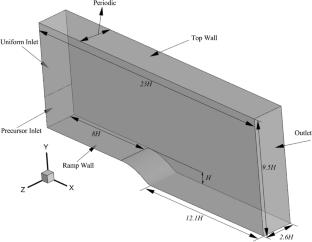In this study, we have investigated the effects of inflow spurious periodicity on a turbulent boundary layer subjected to a weak pressure gradient due to a gently backward ramp utilizing wall-resolved large-eddy simulation. The spurious periodicity is generated through repeating segments of inflow data produced via a long boundary layer precursor simulation. Using a short segment of inflow data and recycling it while introduces a spurious periodicity, can help to reduce the computational cost of the precursor simulation as well as the storage needed to record the massive data. However, there is no quantitative analysis as to how far the results are affected by the spurious periodicity in case of a separated turbulent boundary layer. This study compares several cases with various inflow segment lengths with respect to a reference case with no periodicity. The inflow segments are created by truncating the reference case and thus an intrinsic disturbance is associated with them. An additional case without the disturbance is also considered to examine the latter’s influence on the results. First- and second-order flow statistics are assessed, and spectral analysis is conducted to scrutinize the impact of spurious periodicity. An additional second-order parameter is introduced as an indicator of the spurious periodicity influence. Finally, an especial configuration with active flow control using a synthetic jet actuator is investigated with and without the spurious periodicity. This will help to assess if the dominant frequency of the active flow control is affected by recycling inflow data.




